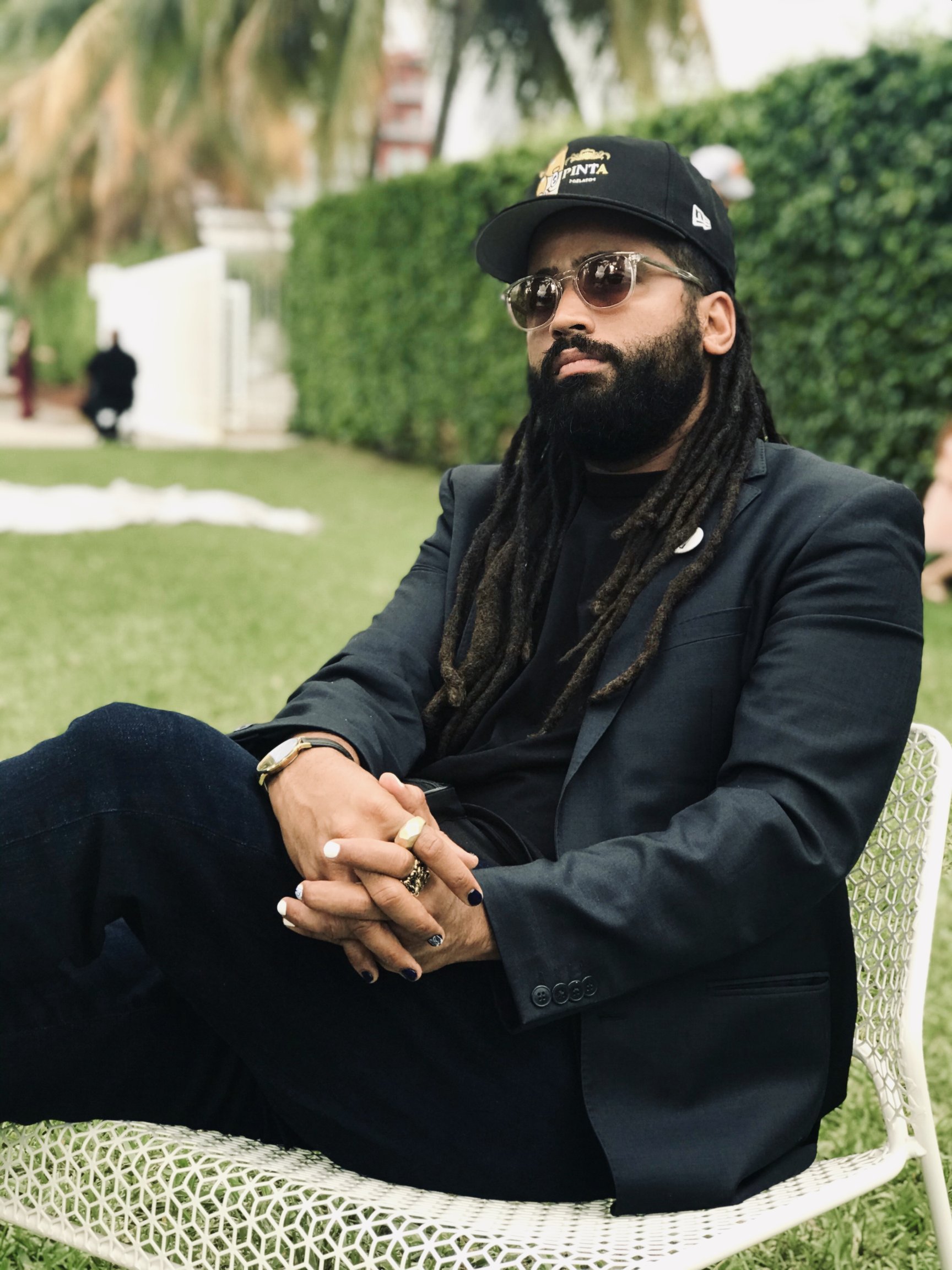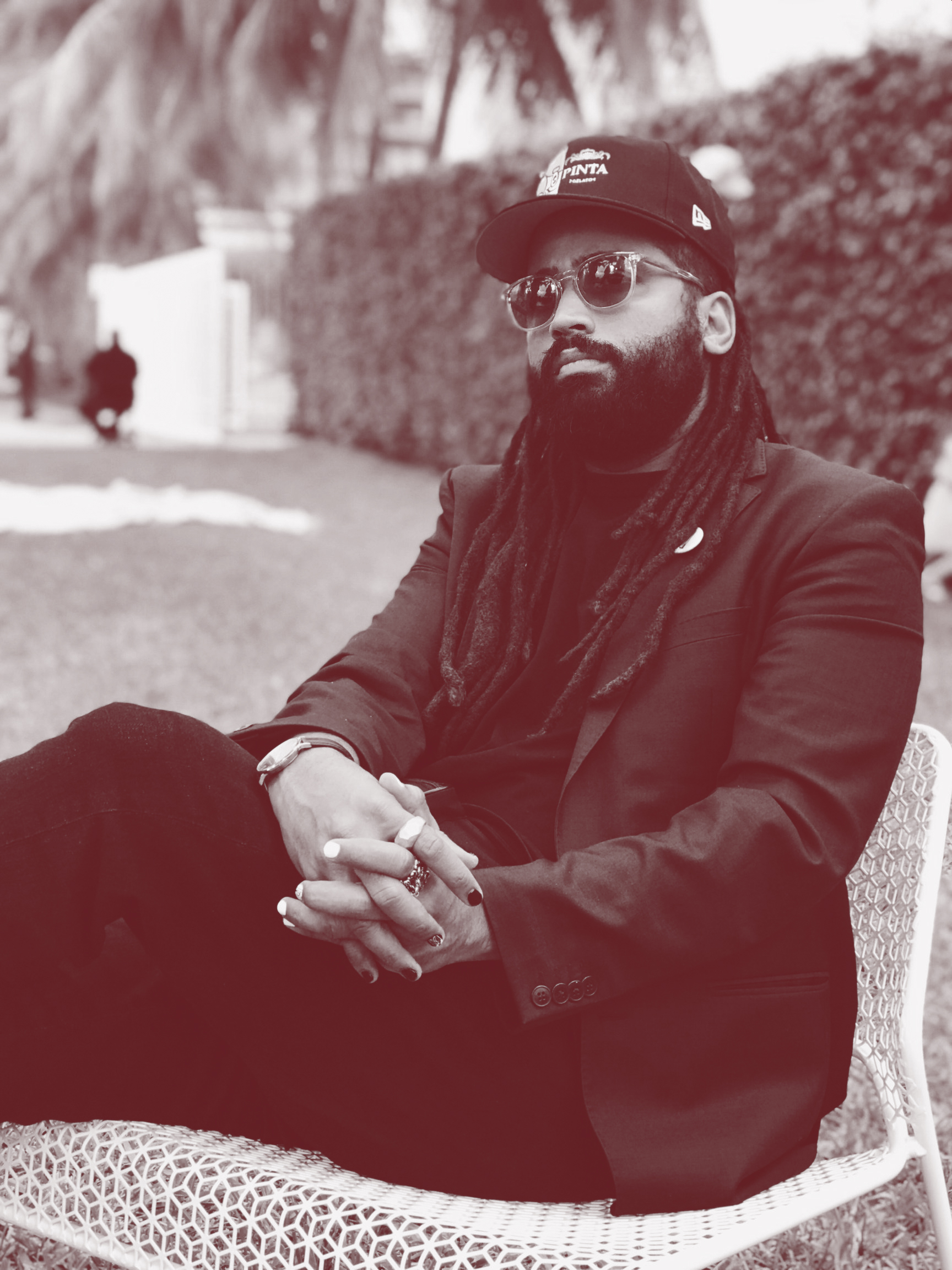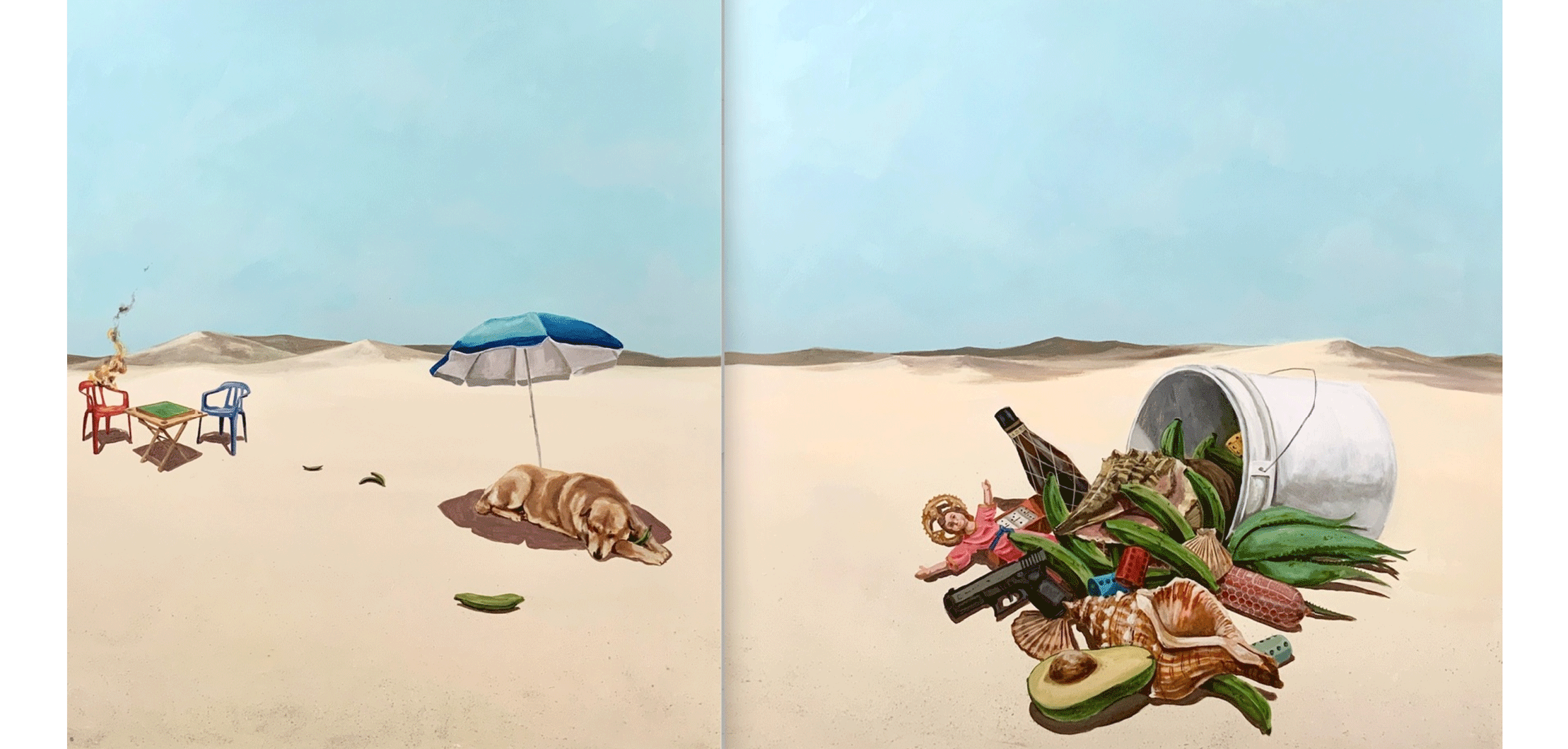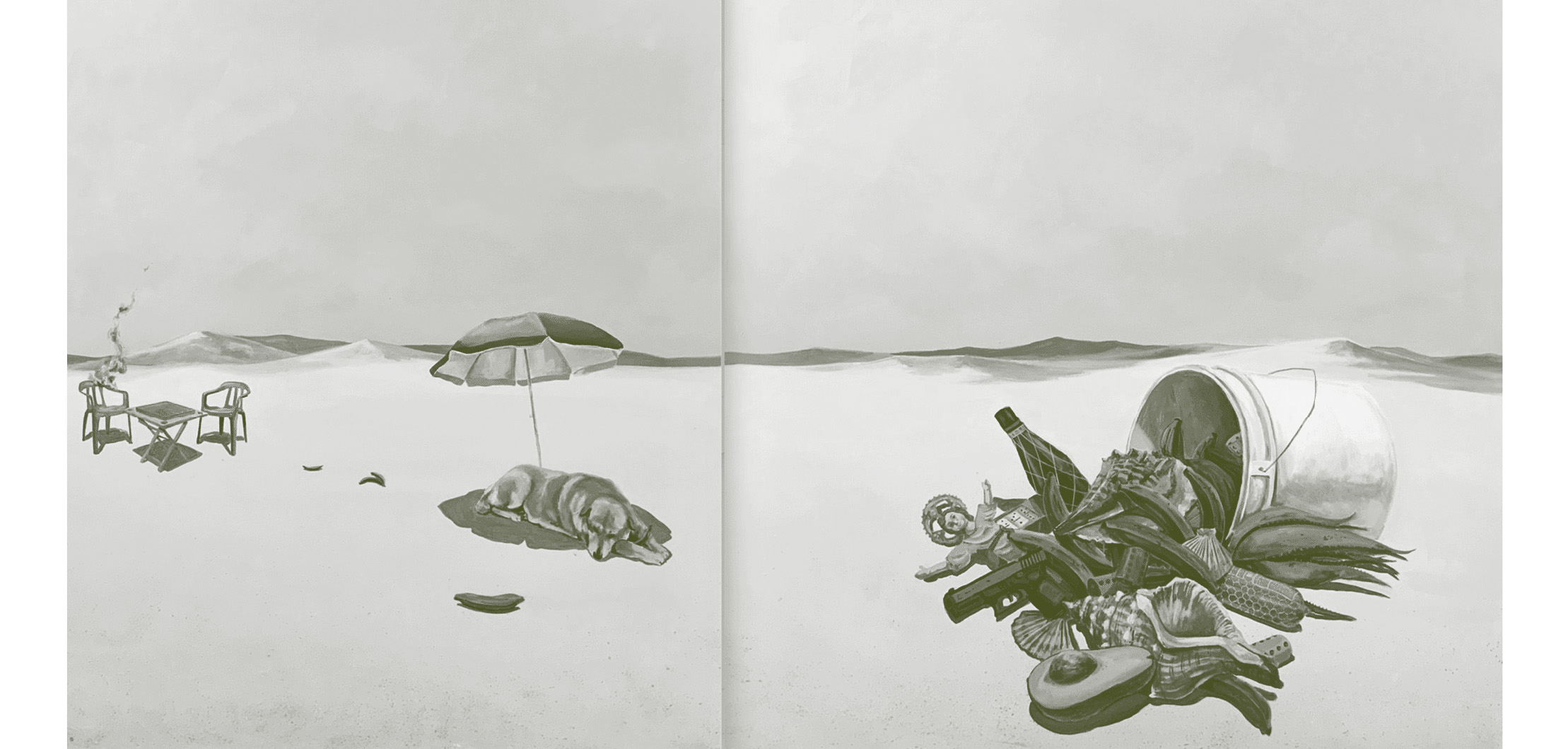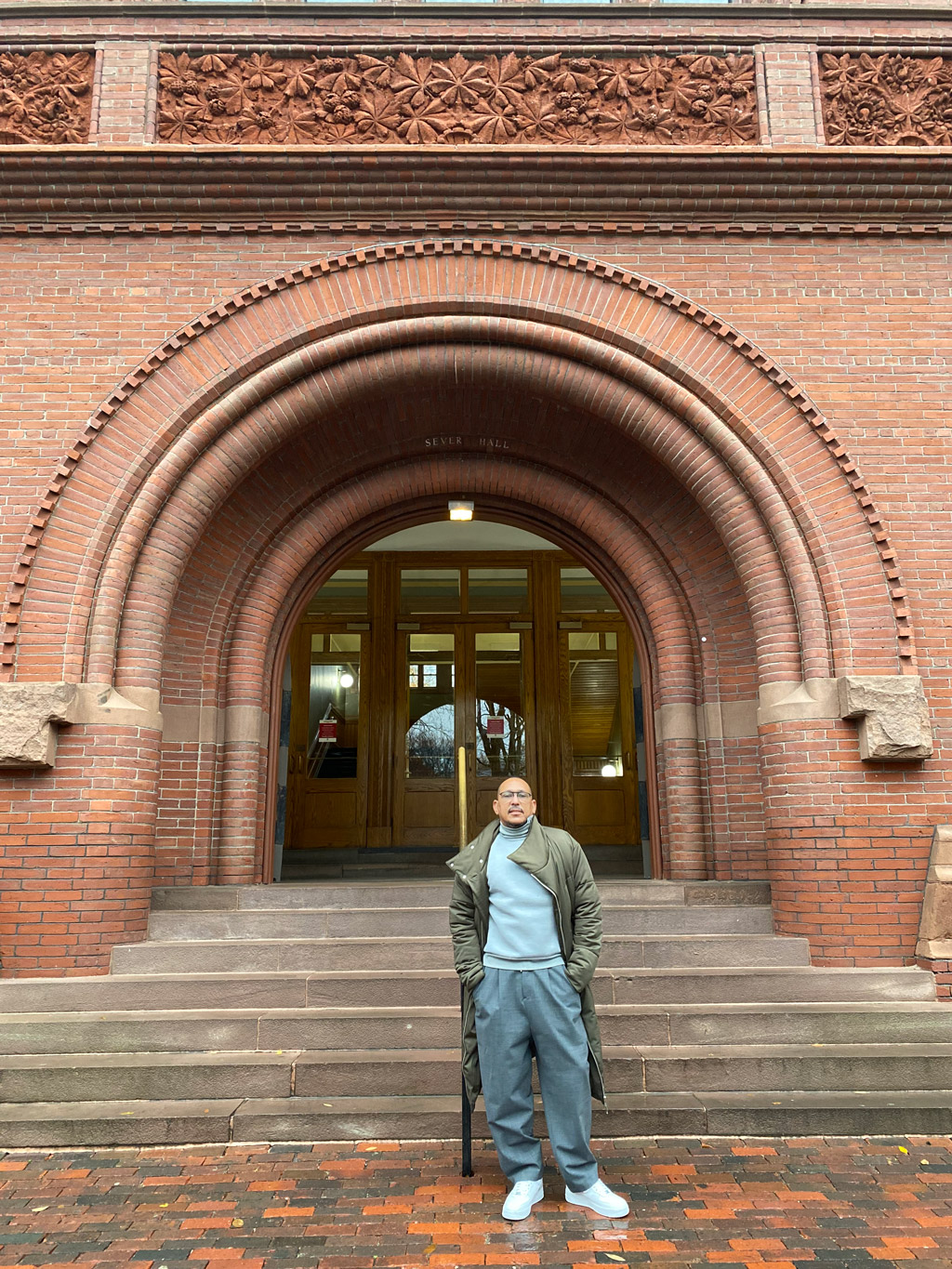
In this conversation, we have the opportunity to discuss the journey of an esteemed curator, Orlando Isaac. Discover how these diverse educational experiences have profoundly influenced his curatorial approach and career. We explore the origins of his passion for curation, breakthrough moments, and the impactful exhibitions Orlando has curated, including the landmark Iván Tovar retrospective in the Dominican Republic.
Your academic background is extensive and diverse, spanning from the Autonomous University of Santo Domingo to Harvard University. How have your varied educational experiences influenced your curatorial approach and your career in general?
It has influenced everything. My studies in advertising, design, film, and more recently, my research on “Afrodescendence and Human Rights” have allowed me to view curating in a broader, much more human way, as a whole where each element cannot be separated from another. From the research that takes place when I embark on a project, I visualize everything to ensure it works, whether in a museum space or an interstitial space. Curating is a profession that heavily depends on everything you can add, and having this knowledge allows even the smallest details, from the narrative labels to the visuals, colors, and spatial elements, to coexist in a cohesive and unique way, so that each exhibition project has its own identity.
How did your journey with curating begin? What was your first opportunity that started to define your career?
I started curating without realizing I was curating, because I wasn’t familiar with the concept. Through the art books I designed, I began to get to know each artist and their world, every cultural manager, and every institution. They always asked for my opinion on how to make things work in a space or how I saw a certain project. Somehow, I would explain how I envisioned it and why. When I attended the openings, to my surprise, I found the works we had discussed in the right place, even the walls painted with the color I had suggested.
I think it was an exhibition titled “Weather, Lines, Video and Tape” at the Lucy García Gallery. She asked me to create a group show and to take it on with complete freedom. For this exhibition, I planned everything from the naming to the artists who should participate, including some who were not part of the gallery but were necessary for the show. It was a wonderful, incredible exhibition with a great vibe from everyone involved, like few experiences I have had.
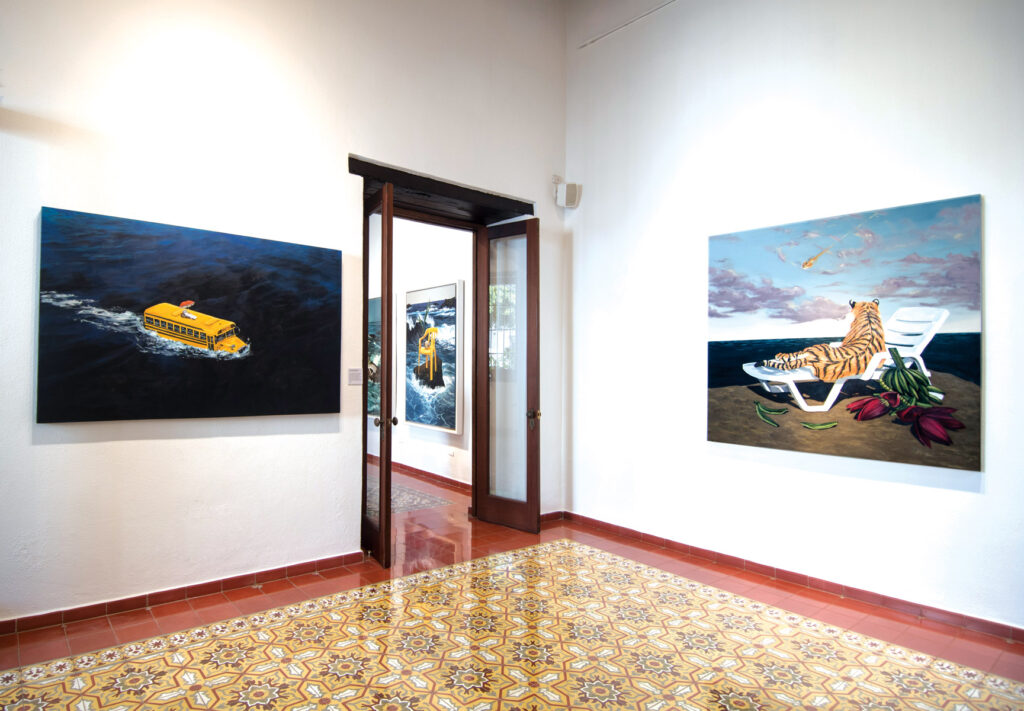
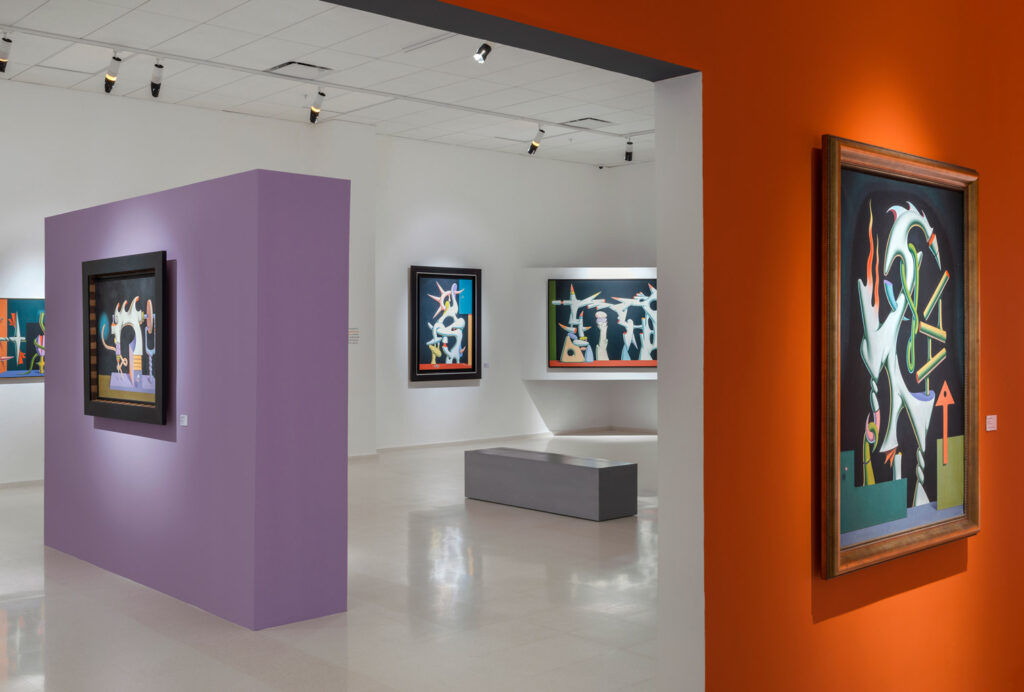
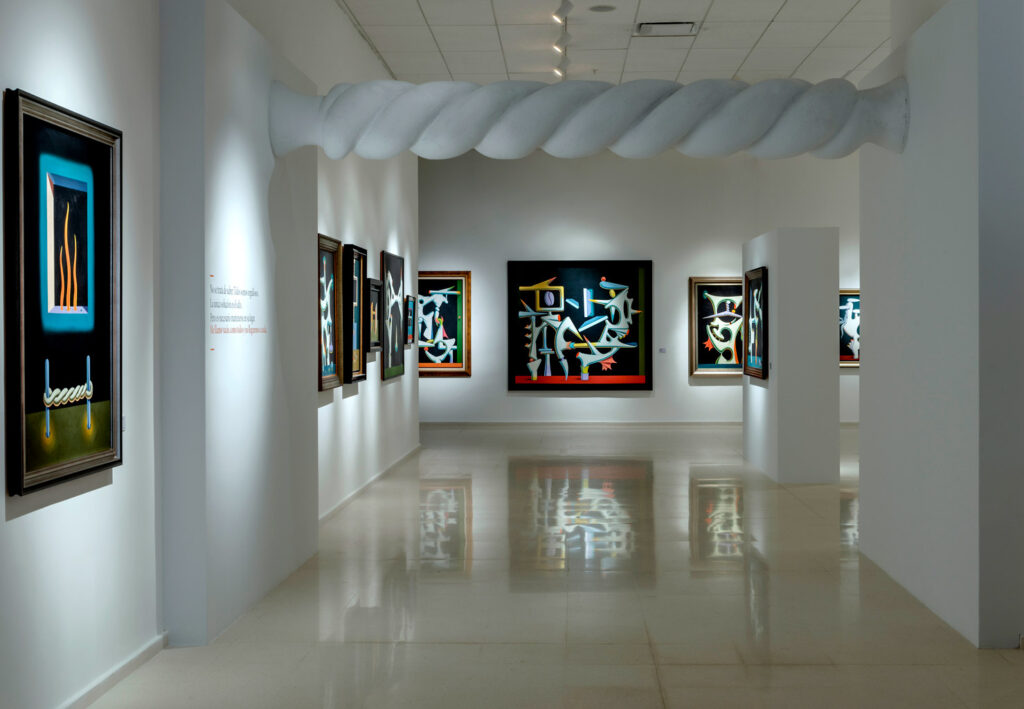
The retrospective of Iván Tovar was the first exhibition of its kind in the Dominican Republic, correct? Tell us about the process of carrying out such an impactful exhibition.
Wow, that exhibition has marked me, and I think it will mark me for life. The day I was called to be part of the team, I had just returned from the cemetery after saying goodbye to my mentor and friend Jorge Pineda, who was my greatest advisor, the friend I talked to all day. It was all very strange. I had already done a small exhibition of Iván Tovar in 2019 at the Lucy García Gallery, which I believe was his last show while he was alive.
I remember it was a Saturday when I received the call from María Castillo, Iván Tovar’s widow. She caught me by surprise and asked if I was interested in participating in this great exhibition. Without thinking, I said yes, as I wanted to escape my grief over my friend’s death. She told me she needed to consult with the manager, without mentioning his name (Don Héctor José Rizek), before giving me a definitive answer. She said he was traveling and would let me know in the coming days. Half an hour later, my phone rang, and she welcomed me aboard. The next morning, Sunday, I was at María’s house. She showed me the most intimate side of Tovar: his sketches, press clippings, handwritten notes, clothing, and personal memories.
After leaving her house, I went to the MAM (Museum of Modern Art) and visualized everything during that hour I walked through the museum. I imagined each space and how I wanted to narrate it visually. I remember thinking of a concept while touring: “The curve, the color, the word, and the wonder,” and I stuck with it. We were against the clock with a set date already announced. For the next 57 days, I lost track of time. I had to do research as if it had taken years. I immersed myself in María’s house, went to Don Héctor José Rizek’s storage, and visited Tovar’s old apartment where I saw his clothes, bamboo chair, and charcoal sketches. I contacted people who had other works that were not in the inventory and included them. The works were validated by the restorer, and I was given the freedom to form my own team. I received support from everyone. When we inaugurated, I felt very proud of the great exhibition we had achieved.
Editorial curation is a big part of who you are. Where does this passion come from?
I remember a talk by Henry Wolf at the Dominico Americano when I was entering the design school at Altos de Chavón. This lecture changed my way of seeing the editorial world and made me realize that there was an immense world through books and how I could play with them. Books, for me, are like an exhibition space outside of the traditional ones (Museums, Art Galleries, Cultural Centers) because exhibitions are temporary, but the book remains as a perennial and not ephemeral document.
Every book I create is a new opportunity to manifest a narrative sequence through its pages, offering another way to see, look, and observe.
How do you balance curatorial projects with editorial ones, and what unique challenges and rewards do you find in curating books compared to exhibitions?
Simply put, I love the idea that the public can enter a physical exhibition space and feel the magic of the artist, and how art can be a transformative axis, changing their perception and the meaning of reality. Watching the viewer walk through a space is an indescribable moment for a curator. It is a great responsibility to value and respect an artist’s work and to magnify it appropriately through a selection of pieces that can dialogue in the gallery, which are preceded by months of hard work with the artist or the institution.
With the book… it’s in my DNA, it is an extension of myself, of what I have done and continue to do for so many years. However, now I am much more conscious of seeing it not just as a document that revives the senses through printing, ocular memory, and touch, but also as something objectual, a work of art itself.
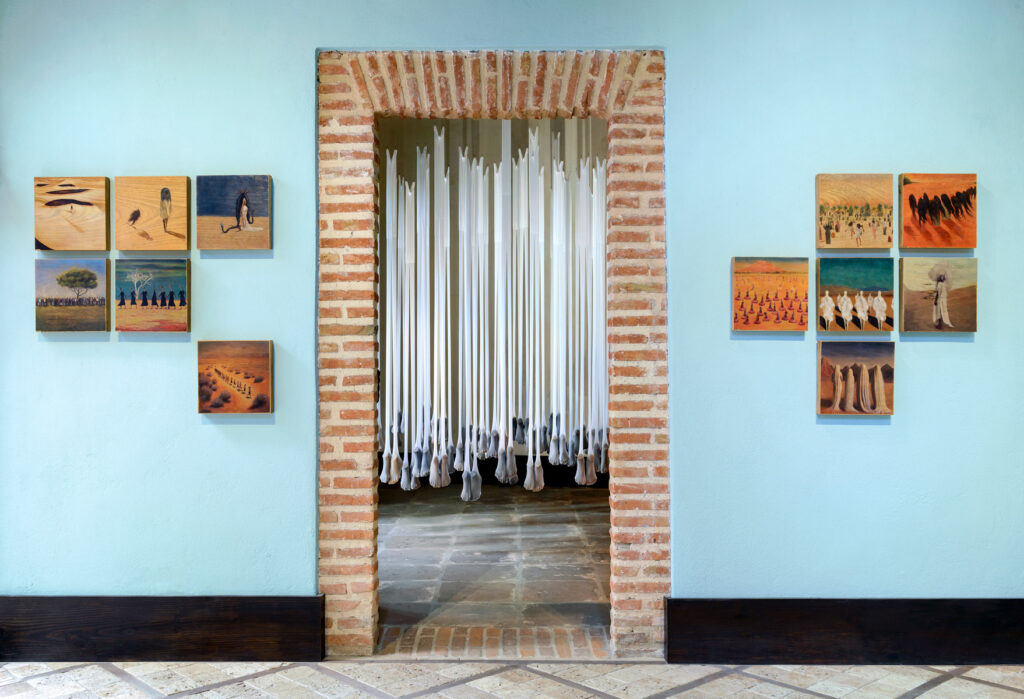

You have worked on numerous exhibitions, including the recent “Amor, Amor: Pulsaciones de la Tierra, la casa y la piel” and “Niebla Rosa, Nave Azul” in 2024. Could you talk about the themes and artistic visions behind these recent exhibitions? How do you approach the process of curating an exhibition from conception to realization?
These two exhibitions feature two magnificent women artists, sensitive yet well-structured when it comes to knowing what they want, a unique quality in women. Both Raquel Paiewonsky and Melissa Mejía are very different in terms of their aesthetic approach and concepts. They are feminists in their own worldviews, different in many aspects but with undeniable integrity and commitment, and luckily, their exhibitions coincided on the same date. I had been accompanying each of them for about a year.
With Raquel, I focused more on the exhibition design, the venue, the identity, the layout, the color, the space, and the labels, considering how she wanted the narrative labels to look and be read, as well as the inclusion of some works that I felt were necessary to tell the story of this exhibition, which we managed from four aspects: love, the earth, the home, and the skin.
With Melissa, it was an exploratory journey ranging from steam punk to tropical retrofuturism. We had long conversations of all kinds, building such a beautiful friendship that we weren’t ashamed to cry in front of each other as our emotions flowed while curating. Being able to accompany her in her first major exhibition was an honor for me, not only because of her undeniable talent but also because of the great human being she is.
What changes have you noticed in the art scene in the Dominican Republic since you started your career over 10 years ago?
A lot has changed. Since Curando Caribe, a good group of graduates from this program has taken the local scene and practically deconstructed and reconstructed not only the visual aspect from established visual narratives but also proposed new ways to rethink an exhibition, both sociologically and anthropologically. This has led to new philosophies in museographic, museological, and narrative aspects by establishing much broader contact through the media we use today with the artist and their work. Listening to their stories, life contexts, dreams, fears, and failures, and establishing new formats in the contemporary realm, has become a way to discover and tell the truth.
What is the greatest lesson you have learned throughout your career?
Never do anything you don’t agree with just to please others. You have to be honest, especially with the values and principles you should uphold. Choose your artists wisely, work with them, and support them not just because they are talented, but because they are honest, committed, and better human beings.

Entrevista en Español disponible a continuación:
Tu formación académica es extensa y diversa, abarcando desde la Universidad Autónoma de Santo Domingo hasta la Universidad de Harvard. ¿Cómo han influido tus variadas experiencias educativas, en tu enfoque curatorial y en tu carrera en general?
Ha influido en todo, tanto mis estudios de publicidad, diseño, cine y más recientemente mis estudios en investigación sobre “Afrodescendecia y derechos humanos”, me ha permitido ver la curaduría de una manera más amplia, mucho más humana, como un todo, donde cada elemento no puede estar separado de otro, desde la investigación propia que se da al momento de embarcarme en un proyecto en donde visualizo todo para que funcione ya sea en un espacio museal o intersticial. La curaduría, es una profesión que depende mucho de todo lo que puedas sumar, y tener estos conocimientos me permiten de que cualquier mínimo detalle desde la ficha narrativa, las visuales, el color, lo espacial puedan convivir de una manera cohesionada y única, para que cada proyecto expositivo tenga su propia identidad.
¿Cómo empezó tu trayectoria con la curaduría? ¿Cuál fue tu primera oportunidad que empezó a definir tu carrera?
Yo empecé a curar sin darme cuenta que estaba curando, porque no estaba familiarizado con esto, a través de los libros de arte que diseñaba comencé a conocer a cada artista y su mundo, cada gestor cultural, cada institución, y siempre pedían mi opinión de cómo hacer las cosas para que funcionen dentro de un espacio, o como yo veía tal proyecto, y de alguna manera yo decía como yo lo veía y les decía porque, y cuando iba a los opening, para sorpresa mía encontraba las obras que habíamos conversado en el lugar indicado, hasta las paredes incluso con el color que les había sugerido.
Pienso que fue una expo que se titulé “Weather, Lines, Video and Tape” en la Galería de Lucy García, ella me pidió que hiciera una colectiva y que la asumiera con total libertad, en esta expo plantee desde el naming, hasta los artistas que debían participar, incluso algunos que no pertenecían a la galería pero eran necesarios para muestra, fue una exposición maravillosa, increíble y con una buena vibra de todos, todas y todes, como pocas veces he experimentado.
La retrospectiva de Iván Tovar, fue la primera exhibición así en República Dominicana, correcto? Háblanos sobre el proceso de llevar a cabo una exposición tan impactante.
Wow, esa expo me ha marcado y pienso que me marcara toda la vida, el día que me llamarón para formar parte del equipo acababa de venir del cementerio de despedirme de mi mentor y amigo Jorge Pineda, el cual para mí era mi mayor consejero, el amigo con el que hablaba todo el día, en fin… fue muy raro todo. Ya había hecho una pequeña exposición de Iván Tovar en el 2019 en la Galeria de Lucy García, creo que fue su última muestra estando vivo. Recuerdo que fue un sábado que recibí la llamada de María Castillo viuda de Iván Tovar, me agarro por sorpresa y me hizo la pregunta que si me interesaba participar en esta gran exposición, sin pensarlo le dije que sí, yo quería escapar de mi dolor por la muerte de mi amigo. Ella me dijo que necesitaba consultarlo con el gestor no me dijo su nombre (Don Héctor José Rizek), antes de darme el sí, me dijo que él estaba de viaje que me avisaría los próximos días, media hora después sonó mi teléfono y me dijo bienvenido al barco y al otro día domingo en la mañana estaba en la casa de María, ella me mostro la parte más íntima de Tovar, desde sus bocetos, recortes de prensa, sus escritos a puño y letra, su ropa, sus recuerdos íntimos, y saliendo de casa de ella me fui al MAM, y lo visualice todo en esa hora que recorrí el museo, imaginé cada espacio y como quería narrarlo visualmente, recuerdo que pensé en un concepto mientras hacia el recorrido, “La curva, el color, la palabra y el asombro” y así lo mantuve, teníamos el tiempo en contra y una fecha ya anunciada, por los próximo 57 días no supe de mí, tenía que hacer el trabajo de investigación como si de años se tratara, yo me interne en la casa María, me fui a los depósitos de don Héctor José Rizek, fui al antiguo apartamento de Tovar y ella, allí vi su ropa, su silla de bambú, sus carboncillos, establecí contacto con personas que tenían otras obras que no estaban en el inventario y se agregaron, las obras fueron validadas por la restauradora, me dieron libertad para formar mi propio equipo, recibí el apoyo de todos, cuando inauguramos me sentí muy orgulloso de la gran exposición que habíamos logrado.
La curaduría editorial es una gran parte de ti. De dónde surge esta pasión?
Recuerdo una charla de Henry Wolf en el Dominico Americano, cuando yo entraba a la escuela de diseño de Altos de Chavón esta conferencia cambió mi manera de ver el mundo editorial y darme cuenta que había un mundo inmenso a través de los libros y como yo podía jugar con ellos. Los libros son para mí como un espacio expositivo fuera de los tradicionales (Museos, Galerías de Arte, Centro Culturales) por que las exposiciones pasan más el libro queda como un documento perenne y no efímero.
Cada libro que hago es una nueva oportunidad para yo poder crear y manifestar a través de sus páginas una secuencia narrativa de lo que sería otro modo de ver, mirar y observar.
¿Cómo equilibras los proyectos curatoriales con los editoriales, y qué desafíos y recompensas únicas encuentras al curar libros en comparación con exposiciones?
Dicho de una manera simple, me encanta la idea de que el público pueda entrar en el espacio expositivo físico y sentir la magia del artista y como el arte puede ser un eje transformador, cambiar tu percepción y el significado de la realidad. Esa manera de ver al espectador recorrer un espacio son momentos indescriptibles para un curador, es una gran responsabilidad poner en valor y respeto la obra de un artista y magnificarlo en su justa dimensión a través de una selección de piezas que puedan dialogar en la sala, que vienen precedidas de un arduo trabajo de meses con el artista o la institución.
Con el libro… lo llevo en mi ADN, es una extensión de mí, de lo que por tanto años hice y sigo haciendo, pero ahora soy mucho más consciente al verlo no solo como un documento que revive los sentidos desde la impresión, la memoria ocular, lo táctil, convirtiéndolo en algo objetual, una obra de arte también.
Has trabajado numerosas exposiciones, incluyendo recientemente “Amor, Amor: Pulsaciones de la Tierra, la casa y la piel” y “Niebla Rosa, Nave Azul” en 2024. ¿Podrías hablar sobre los temas y las visiones artísticas detrás de estas exposiciones recientes? ¿Cómo abordas el proceso de curar una exposición desde la concepción hasta la realización?
Estas dos exposiciones de dos magnificas mujeres artistas, sensibles, pero bien estructuradas a la hora de saber lo que quieren, para mí una cualidad única en la mujer, tanto Raquel Paiewonsky y Melissa Mejía, son dos artistas muy diferentes en cuanto su planteamiento estético, conceptos, feministas en sus propias cosmovisiones, diferentes en muchos aspectos pero de una integridad y compromiso indiscutible y para suerte coincidieron en una misma fecha, con cada una llevaba alrededor de un año de acompañamiento.
Con Raquel me embarque más en el diseño expositivo, en el venue, la identidad, el recorrido, el color, el espacio, en las cartelas como quería que se vieran y se leyeran las fichas narrativas, así como en la inclusión de algunas obras que para mí eran necesarias para contar esta expo que manejamos desde cuatro ámbitos: el amor, la tierra, la casa y la piel.
Con Melissa, fue un viaje exploratorio que iba desde el steam punk, hasta un retrofuturismo tropical, tuvimos largas conversaciones de todo tipo, hasta crear una amistad tan hermosa que no nos daba vergüenza llorar ante nuestras emociones que fluían a la hora de curar, poder acompañarla en su primera gran exhibición para mí fue un honor, no solo por su innegable talento sino por el gran ser humano que es.
¿Qué cambio has notado en la escena de arte en RD desde el momento que empezaste tu carrera hace más de 10 años?
Muchísimo, a partir de Curando Caribe un buen grupo egresado de este programa toma la escena local y prácticamente deconstruye y reconstruye no solo el aspecto visual desde las narrativas visuales establecidas, sino propone nuevas maneras de como replantear una muestra, tanto en lo sociológico, antropológico y con ello nuevas filosofías en aspecto museográfico, museológico y narrativo al establecer un contacto mucho más amplio por los medios que manejamos hoy en día con el artista y su obra, escuchar sus historias, sus contextos de vida, sus sueños, sus temores y fracasos, establecer nuevos formatos en lo contemporáneo, como una manera de encontrar y contar la verdad.
¿Cuál es la mayor lección que has aprendido a lo largo de tu carrera?
Nunca hacer nada con lo que no estés de acuerdo por quedar bien con los demás, hay que ser honesto, sobre todo con los valores y principios que debemos poseer, escoger bien nuestros artistas, trabajar con ellos y apoyarlos no solamente porque sean talentosos, sino porque sean íntegros, comprometidos y mejores seres humanos.



